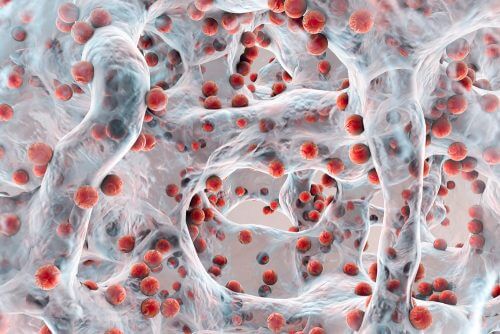The institute's scientists showed that bacteria that gather in large structures, called "biofilm", use the calcium carbonate produced by the bacteria to protect the structure and create a kind of skeleton for it that gives the structure protection. Developing a way to break through this protective layer may help fight bacteria that have developed resistance to antibiotics

Why do bacteria develop resistance to antibiotics when they join together in large cooperative groups, called "biofilms"? Scientists at the Weizmann Institute of Science offer a surprising explanation for the phenomenon: the bacteria build a kind of rigid fortress around their colony, which repels the drugs, and allows the bacteria inside the "wall" to defend themselves against the deadly substance. Their findings - that were published recently in the scientific journal Biofilms and Microbiomes From home Nature – may help scientists design more effective methods of treating diseases involving bacteria that have developed antibiotic resistance in this way.
Dr. Ilana Kolodkin-Gal, and senior intern Dr. Yara Oppenheimer-Shanan, from the Department of Molecular Genetics at the Weizmann Institute of Science, sought to understand how bacteria living in biofilms develop resistance to antibiotics. Together with other members of the research group, they grew common bacteria, which formed large and stable biofilms. The bacteria were then grown under different conditions and at different levels of carbon availability. Later, the researchers used hydrochloric acid to remove the organic material from the colony. The final product of the chemical process was a mineral skeleton - a structure composed of calcium carbonate, which is the hard material that can be found on the outside of corals and starfish.
In the next step, the scientists examined the bacterial colonies using a computerized mapping (CT) system, which allowed them to visualize the three-dimensional structure of the bacterial colony structures. "Usually such mapping is used to discover structures on the order of the size of animal bones," says Dr. Kolodkin-Gal. This research method was made possible thanks to research associate Dr. Vlad Brumfeld, from the Department of Chemical Research Infrastructures, who adapted the method to the research question.
These and other tests showed that the calcium carbonate produced by the bacteria, at the same time, both protects the biofilm and creates a skeleton for it. The scientists exposed the biofilm to the organic (and toxic) compound ethanol, and found that the most fortified structures were 40 times more resistant than the bacteria that were not incorporated into the biofilm. In addition, the scientists discovered that the mineral structures created a kind of "scaffolding" in the architecture typical of these colonies: these scaffoldings allow the bacterial colony to grow by expanding the surface area, and even help the colony receive more oxygen, and get rid of carbon dioxide.
"It is possible that the biofilms produce the hard structures in a way similar to the one in which corals build reefs," says Dr. Kolodkin-Gal. "Each bacterium produces and secretes grains of calcium carbonate based on its communication with its neighbors, and according to its sense of its environment. This is how the complex structure was created, even in the absence of a blueprint or an overseer."
But how do the bacterial genes responsible for biomineralization lead to the formation of the hard biofilm structures? Dr. Kolodkin-Gal and the members of her group intend to continue investigating the phenomenon, in collaboration with Prof. Steve Weiner and Prof. Leah Eddy from the Department of Structural Biology at the Institute.
Members of the research group now aim to discover how these structures can be hacked. "The importance of this question," says Dr. Kolodkin-Gal, "can be learned from the fact that the biofilms created by the tuberculosis bacteria, for example, contribute to the treatment being effective only if it continues for at least six months, while the disease becomes resistant to different types of antibiotics. If we can prevent the bacteria from hiding behind those structures, we may be able to kill them quickly, easily and thoroughly."

3 תגובות
Is ethanol toxic? Tell those without the bars... Maybe the ethanol is toxic to the bacteria - but it is not clear to me if the ethanol simply dries the bacteria and kills them by a physical action or if ethanol is toxic to the bacteria in a biological way. Does anyone know?
It reminds me of the amyloid phenomenon inside the brain
I suggest testing a similar activity in cancer cells as well, they also have a stage in which their resistance to chemotherapy and other methods increases
Yehuda